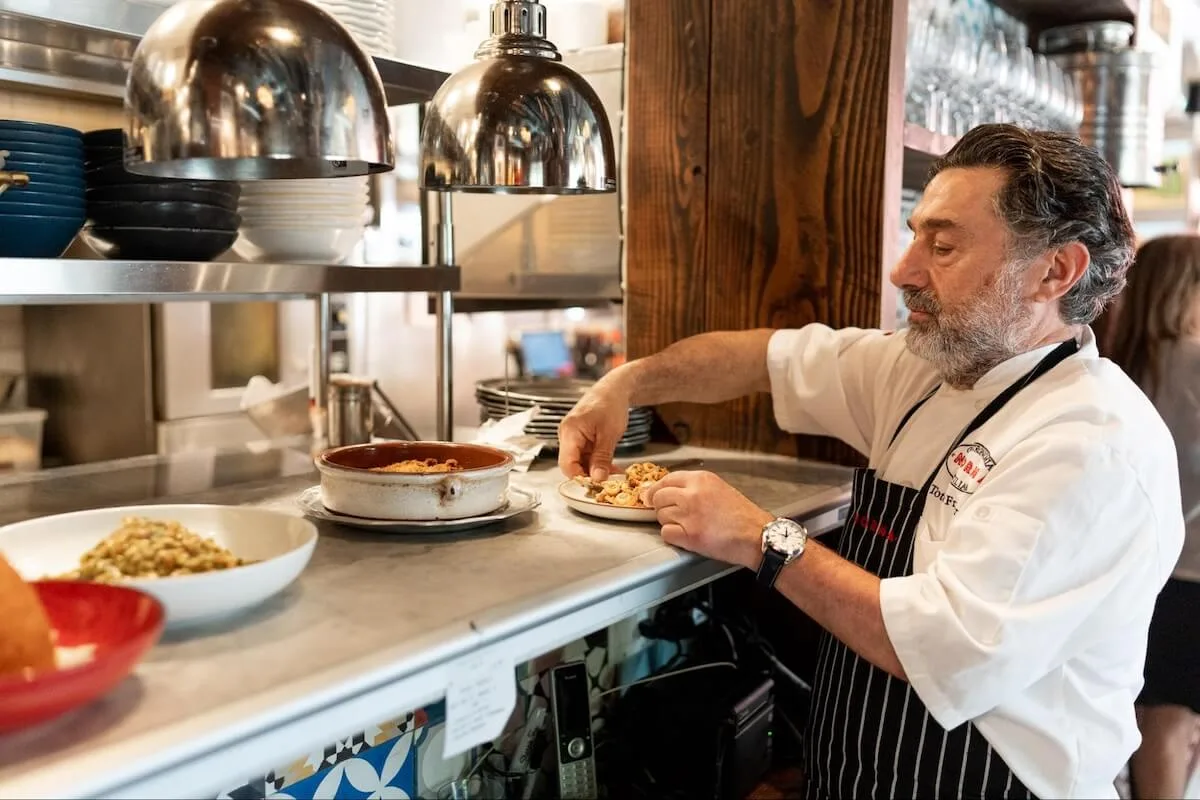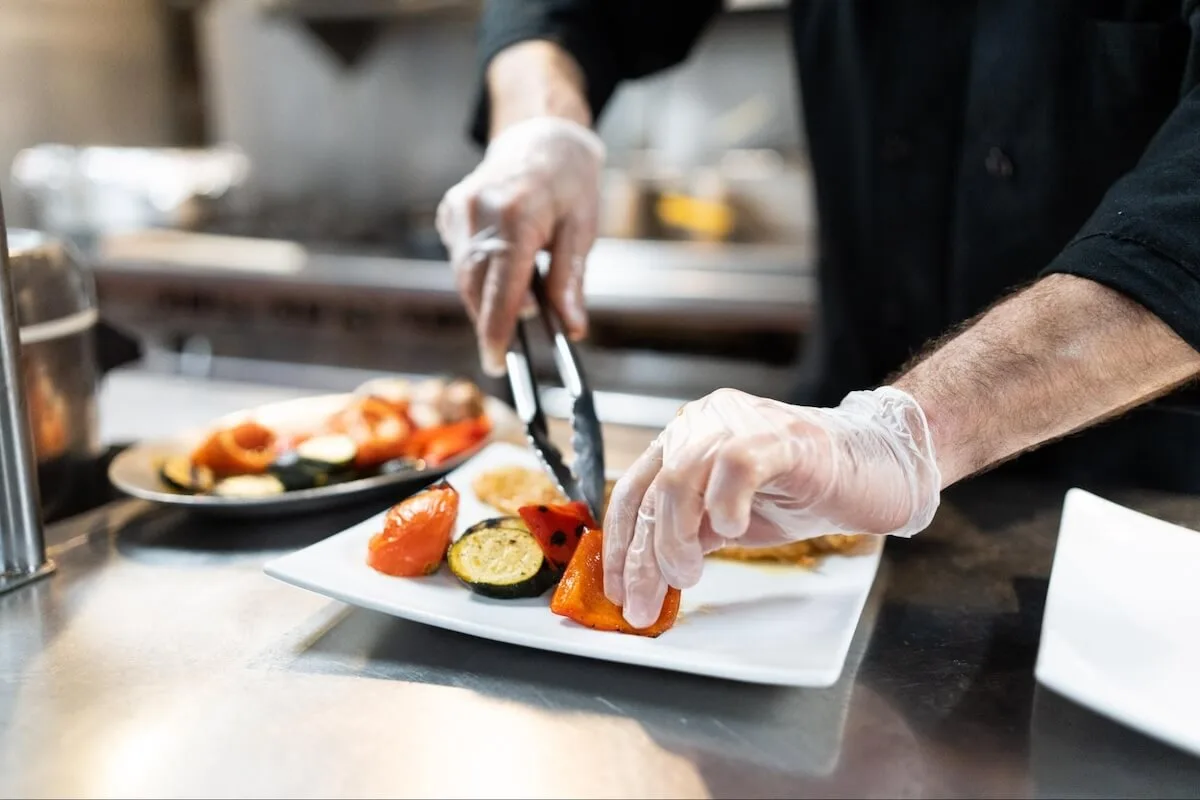14 key restaurant metrics and formulas to keep you on top
Skip the article and turn takeaways into action by scheduling a call with our team.
The restaurant business involves a surprising amount of math—or at least it does to outsiders. After all, it’s a business, and any business involves paying attention to key performance indicators (KPIs). Though there are countless restaurant metrics, some stand out as the most important to pay attention to since they lead to increased profits.
We’ve identified 14 different key restaurant metrics to track, all of which can lead to improved operations, profitability, and customer service. While there’s a learning curve, old hands in the restaurant industry will tell you knowing your metrics backwards and forwards is the path to success.

1. Prime cost
Your prime cost is the cost of your labor and your cost of goods sold (COGS)—a large chunk of your overall operating expenses. Prime cost represents the largest controllable expense a restaurant has. A well-managed prime cost directly impacts a restaurant’s profitability, as every percentage point you save goes directly to your bottom line.
Typically, a successful restaurant should maintain a prime cost of around 60% of total sales. Full-service restaurants may run a few percentage points higher than quick-service or fast food restaurants due to lower labor costs.
Figuring out your prime cost is simple:
Labor cost + COGS = prime cost
For prime cost as a percentage of sales, use this formula:
Prime cost percentage = (prime cost + total sales) x 100
2. Cost of goods sold
COGS represents the cost of all ingredients and materials used to prepare menu items during a period of time. This includes everything: main ingredients, garnishes, sauces, cocktail mixers, etc.
Tracking COGS is key to a restaurant’s success because it:
- Helps make smart menu pricing decisions
- Assists with profit margin forecasting for individual menu items
- Identifies seasonal cost fluctuations
- Allows for improved inventory management
- Provides insight into waste reduction opportunities
The formula for calculating COGS is:
Beginning inventory + purchased inventory – ending inventory = COGS
3. Labor cost percentage

Keeping labor costs in check while maintaining excellent service is one of the trickiest parts of the restaurant business. Labor cost percentage includes everything labor-related: wages, salaries, benefits, taxes, insurance, and even uniforms. This restaurant metric covers both back-of-house (BOH) and front-of-house (FOH). Typically, restaurants aim for a labor cost of 30% of total sales or under. High-end restaurants tend to spend more on labor due to larger staffing and customer service needs.
Monitoring your labor cost percentage helps restaurant owners:
- Optimize staffing levels during peak and slow periods
- Make informed scheduling decisions
- Maintain competitive pay rates while protecting profits
- Find opportunities to improve restaurant operation efficiency
To determine your labor cost percentage, use this:
Labor cost % = (total labor costs / total sales) x 100
4. Break-even point
Your break-even point is the point where you’re not losing money and not making money: You have zero profits or losses. In other words, the restaurant is staying afloat. For many new restaurants, hitting this point is a major milestone.
Tracking your break-even point helps you:
- Set realistic sales targets based on real-world data
- Make informed decisions about menu pricing
- Better manage food and operational costs
- Plan improvements to reduce the break-even point threshold
Here’s the formula:
Break-even point = total fixed costs / ((total sales – total variable costs) / total sales)
Example: If your restaurant has total sales of $15,000 per month, fixed costs of $6,000 per month, and variable costs of $6,000 per month, your break-even point would be $10,000 in food and beverage sales per month—after that, you’re making profit.
5. Food cost percentage
Profit margins are notoriously slim in the restaurant industry. Understanding your food cost percentage and finding a way to keep it down without sacrificing quality is one of the best ways to make a restaurant profitable.
Food cost percentage represents the ratio between your total food costs in inventory and the revenue the food generates when it’s sold. This crucial restaurant metric helps you understand how much of your food sales revenue is consumed by ingredient costs.
The formula for food cost is:
Food cost % = (COGS / total food sales) x 100
A good rule of thumb is to aim for a food cost percentage around 30%. Lower than that and you’re likely to be quite profitable—too high and you may struggle. Consider adjusting selling prices to reflect changing food costs, as well as comparing your actual food cost to your ideal food cost.
6. Overhead rate
Your overhead rate covers your indirect costs outside of materials and labor. This includes:
- Rent and utilities
- Salaries for administrative work
- Insurance premiums
- Restaurant marketing campaigns
- Equipment maintenance
- Restaurant technology systems
Typically, a restaurant’s overhead will be somewhere around 35%, but can vary by location due to rent costs. Keeping track of these financial metrics can help restaurant owners cut down on costs without impacting the customer experience. Finding cheaper insurance, for example, will do exactly that.
Overhead rate can be measured thus:
Overhead rate = total indirect costs / total sales
If your monthly indirect costs are $20,000 and your sales were $100,000, your overhead ratio cost would be 20%.
7. Inventory turnover ratio

Your re inventory turnover ratio shows how quickly you’re using and replacing your food stock over a given period of time. A higher rate generally indicates better restaurant inventory management practices and increased efficiency, since it keeps food fresh. However, an overly high ratio may indicate you’re understocked, whereas a low ratio means you’re overstocking.
This restaurant metric is particularly vital because it directly affects food costs, waste reduction, and cash flow.
Multiple factors influence the inventory turnover ratio:
- Menu complexity and size means more inventory is needed, meaning more things to order and a potentially lower turnover rate
- Ordering practices like over-ordering can lead to waste, while under-ordering may lead to running out of stock
- Limited space in storage capacity can force restaurant management to order goods more frequently
The inventory turnover ratio formula is:
COGS / average inventory value = inventory turnover ratio
So, if you have annual sales of $100,000 and an average inventory value of $5,000, your inventory turnover ratio would be 20.
8. Sales per square foot

Sales per square foot is a key restaurant metric that helps determine your gross profit and cash flow. Restaurant owners will want to calculate it yearly. The formula is:
Annual sales / square footage = sales per square foot
FYI: You can call it total revenue instead of annual sales if you want to.
Typically, a profitable restaurant will be making upwards of $250 per square foot. A restaurant making less than $150 per square foot may find surviving difficult. Tie this benchmark to your break-even point to see where you can improve.
9. Gross profit
A restaurant’s gross profit margin is simply the difference between your total revenue and your COGS. This restaurant metric demonstrates how much money remains after accounting for the ingredient costs in your menu items. Tracking it helps set menu prices, identify high-margin menu items, and otherwise make smart decisions in the BOH.
The formula:
Gross profit = total sales – COGS
A gross profit of around 70% is a solid benchmark for most restaurants.
10. Net profit
Net profit is calculated after gross profit. It takes into account all expenses, including COGS, labor costs, and overhead.
Calculating net profit is simple:
Net profit = total revenue – all costs
Essentially, “all costs” means your prime cost plus your overhead. If you’re in the single digits, you’re surviving. Getting north of 10% in net profit margin means you’re doing quite well.
11. Table turnover rate

Improving your restaurant performance in the FOH starts with understanding your table turnover rate. This key restaurant metric directly impacts your overall revenue potential.
Table turnover rate is the average number of times a table is used during a shift. The higher your table turnover rate, the higher the number of customers you can serve. On the other hand, the table turnover rate needs to be balanced with customer satisfaction at sit-down restaurants: No customer wants to feel hurried out the door.
Table turn is an important FOH performance metric because it:
- Maximizes revenue potential from a limited number of seats
- Reduces customer wait times, leading to higher customer satisfaction
- Identifies bottlenecks in service
- Helps coordinate FOH and BOH operations
- Assists in making smart staffing decisions
The table turnover rate formula is:
Table turnover rate = number of parties served / number of tables
Typically, casual restaurants aim for a table turnover rate of 3-4 per shift, while fine dining restaurants may go as low as 2. The key is finding the sweet spot between operational efficiency and a pleasant dining experience.
12. Employee turnover rate

Finding and keeping top-tier employees is one of the more difficult parts of the restaurant industry, which typically suffers from very high turnover. High turnover directly impacts a restaurant’s bottom line. Employee turnover rate reveals the stability of your workforce and how effective your management practices are.
Turnover rates in the industry can be as high as 75%, which lead to significant costs in hiring and training. A high turnover rate indicates something is wrong either with your pay, management practices, or workplace environment, for example. Should your turnover rate be exceptionally high, it’s wise to speak directly to your staff about it to find out what’s going on.
Employee turnover rate can be found with this formula:
Turnover rate = (number of separations / average number of employees) x 100
To find your average number of employees:
Average employees = (starting employees / ending employees) / 2
13. Customer retention rate
Building solid customer relationships and turning new customers into regulars is one of the best paths to success in the restaurant business. So, your customer retention rate measures the percentage of customers your restaurant keeps over a specific period of time.
Returning customers are the lifeblood of a successful restaurant. They typically spend more than new customers, provide valuable word-of-mouth advertising, generally offer positive reviews, and offer reliable restaurant revenue.
To calculate your customer retention rate over a given period of time, use this:
((Number of customers – new customers acquired) / number of customers at the start of the period of time) x 100 = customer retention rate
A high retention rate shows your customers are loyal and happy. Since customer acquisition costs (CAC) are significantly higher for new customers than for retaining returning ones, the higher your retention rate, the better.
14. Social media engagement rate
Tracking the performance of your restaurant marketing campaigns shows you what’s working and what isn’t. With the wide variety of social media platforms to use, different marketing strategies will work on different platforms.
In general, social media engagement rates of 1-5% are solid. Keep note of what posts are effective and double down on the ones that work, while ditching the ones that don’t—just like you would with menu items. Other metrics to pay attention to include your click-through rate, conversion rate, and cost per click.
Use technology to track restaurant metrics

Navigating all these numbers would be enough to drive even a mathematical wizard to the brink of insanity if they had to run a restaurant at the same time as tracking all these metrics in real-time.
Luckily, restaurant technology has come a long way. Gone are the days of pen and paper. Top-notch restaurant tech makes restaurateurs’ lives easier by putting everything in one easily accessible place. Imagine a system that syncs your point-of-sale (POS) system with inventory management, FOH management, and reservation management systems.
That’s not the stuff of legend: It’s Yelp Guest Manager.
If that sounds helpful, reach out to us for a free demo. We’d love to show you how much time this can save you, as well as how well-managed data can lead to wise decisions.